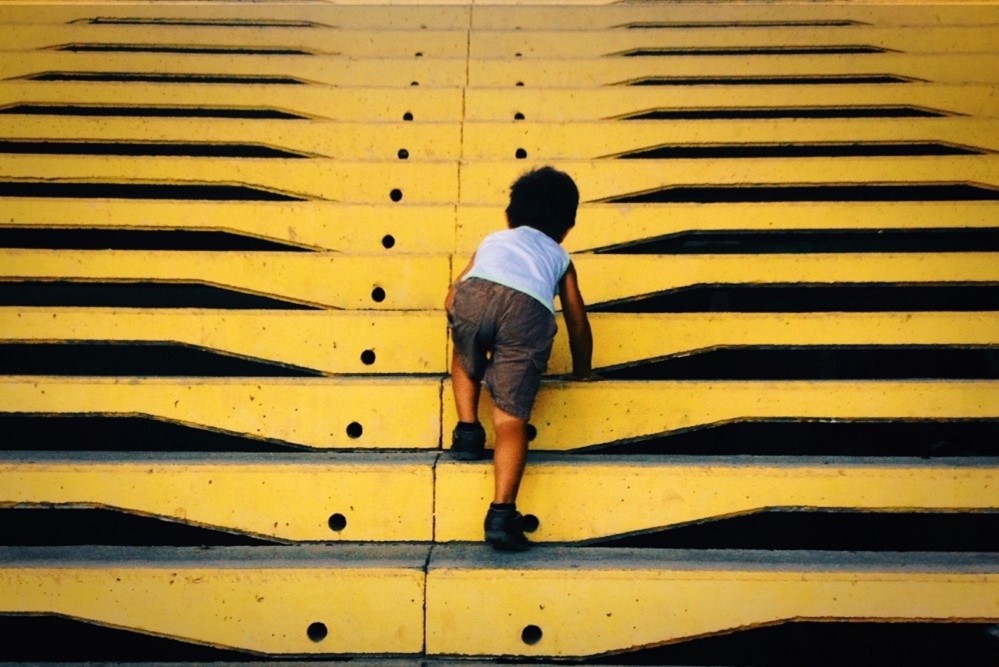The American Psychological Association (APA) defines resilience as “the process of adapting well in the face of adversity, trauma, tragedy, threats, or significant sources of stress.” When things go wrong, the protective emotional armor called ‘resilience,’ is what helps you to cope and get through challenging times. Sometimes it makes you even stronger than you were before.
“Resilience” is a buzzword used by many people, but not everyone resonates with it. When we talk about resilience in children, we are talking about a child’s ability to cope with ups and downs and bounce back from the challenges they experience during childhood. Building resilience helps children not only to deal with current challenges, but also to develop the basic skills and habits that will help them face challenges later in life, during adolescence and adulthood.
When raising “resilient kids,” resilience is not necessarily a state to strive for. Rather, it is about teaching kids the specific tools and coping strategies to cultivate self-esteem, trust, adaptability, kindness, and healthy relationships. Every kid has some degree of resilience.
How to raise resilient children?
According to Center on the Developing Child at Harvard, “the single most common factor for children who develop resilience is at least one stable and committed relationship with a supportive parent, caregiver, or other adult. These relationships provide the personalized responsiveness, scaffolding, and protection that buffer children from developmental disruption.” Children who grow up in a supportive environment get a head start in terms of building resilience.
There are many concrete and specific ways in which parents and caregivers can help promote resilience in children, according to Child Psychologists, Dr. Brooks, and Dr. Goldstein:
#1: Build Empathy
Help your child develop empathy by teaching and guiding them to consider, visualize, and understand struggles and challenges faced by others. Children’s books can be an incredibly useful source to help children understand the concept of empathy, and talk about feelings such as anger, frustration, loneliness, sadness, hunger, etc.
#2: Identify a Go-To Person
Children must have at least one go-to person who they can confide in when they face challenges. Parents or caregivers can reach out to children when they are struggling with an activity and assure them that you are there for them in case they need help.
#3: Listen
There is an enormous difference between listening and hearing. Parents many times tell their children, “I am listening” but are they really listening? Parents and caregivers must practice active listening, by making eye contact with the child, turning towards them to listen, and engaging in the conversation.
#4: Accept Children for Who They Are
This is extremely important to build resilience in children. For example, some children may need a lot of practice in learning new concepts in science, and other children may need lots of practice in social skills. Both are equally important. Parents must guide their children from where they are to help build resilience.
#5: Identify Children’s Strengths
Parents and caregivers must find and understand areas of strength and offer them opportunities to build on their strengths. When children build confidence utilizing their strengths, they will be more amenable to explore other activities which they may not necessarily be strong in. Resilience happens more easily when children can explore their strengths first.
#6: Do-Overs
Mistakes – who has not made them?! Help children realize that mistakes are not catastrophic and can be used as opportunities to grow. By giving children a chance to “do over,” it helps build trust between the parent and the child.
#7: Develop Responsibility
Give children many different opportunities to build responsibility. For example, guide them to clean their spaces, help you around the home, caring for pets, taking care of the garden etc.
#8: Offer Meaningful Participation
When children can participate in meaningful and authentic ways at home, they will feel connected. Connection helps foster resilience and reduce anxiety and stress.
#9: Teach Problem-Solving
Foster resilience by modeling problem solving. Model these three steps and then have children act independently from you.
- Identify the problem with all involved.
- Think of two or three ways to solve the problem that all can agree upon.
- Think of a reminder that you can use when needed and share with those involved such as using signs or non-verbal cues.
It would be easy to imagine that it takes something extraordinary to thrive against the odds. But what we need to develop resilience, is as simple and ordinary as everyday connections and support. Resilience expert, Ann Masten, has found that resilience, far from being exceptional, is quite common. She called this the “ordinary magic.”
Human brains are malleable. This malleability or “plasticity” is greatest in early childhood. So, the earlier we start strengthening our children’s capacity to resist stress, the better. Although possible, it is much harder to rewire our brains as we grow older.
The specific ways to foster resilience provided above, will be better received by children if we allow them to experience change in small increments as they take baby steps. These minor changes can lead to the ability to adjust to larger changes that children routinely face and can create a more resilient or buoyant child who can adapt to life’s challenges. By honoring feelings that children have in dealing with adversity or setbacks, along with identifying their strengths, we can play a part in helping them to “bounce back” or be resilient.
While many parents feel they must step in and “save” their children from failure, it can be more productive to help kids problem-solve how they can improve and adapt to different situations accordingly. Life is a rollercoaster. Try to remind your child that if or when something bad happens at school, in social settings, or online, or if they have simply made a mistake, support is available. It is good to let them know that you are there to listen and help them.
About the Author: Padma Rajan, a longtime fan of Novak Djokovic, is also a professional who works in the field of Early Childhood Education (ECE) grants management, research, and evaluation. She has two children, son who is a lawyer, and daughter, a pediatrician. She lives in Atlanta, Georgia, USA.





















